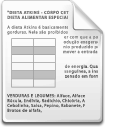Priority areas for conserving obligate scavengers and preventing bottom-up ecosystem disruptions
Santangeli, A., Girardello, M., Buechley, E., Botha, A., Di Minin, E. and Moilanen, A. (2018). Priority areas for conserving obligate scavengers and preventing bottom-up ecosystem disruptions. 5th European Congress of Conservation Biology. doi: 10.17011/conference/eccb2018/107475
Tekijät
Päivämäärä
2018Tekijänoikeudet
© the Authors, 2018
Biodiversity conservation lacks sufficient funding and the evidence-base on what works and where efforts should be focused. Vultures are the sole obligate vertebrate scavengers and play a key role in maintaining the ecosystem in balance, e.g. by rapidly removing decomposing organic matter, aiding in sanitation and prevention in the spread of diseases. Vultures are the most threatened avian functional group, owing to poisoning, collision with wind turbines and transmission lines, electrocution, anthropogenic disturbance and habitat degradation, among other threats. Recent international commitments to halt the decline of African and Eurasian vultures have been formalized (CMS-Multi-species Action Plan to conserve Africa-Eurasian vultures), whereby the threats, and the actions to revert them, have been identified. Given the vast range covered by vultures, there is a need to identify priority areas for vulture conservation where efforts should be concentrated. We run a spatial prioritization analysis aimed to identify priority areas for conserving the 15 vulture species occurring across Africa-Eurasia. We performed species distribution modeling to refine vulture occurrence within their IUCN range. Next we obtained spatial threat layers. A layer for unintentional poisoning, whereby farmers attempt to control carnivores using poisons which also kill vultures, was obtained by mapping the human-carnivore conflict, i.e. by interacting carnivore and livestock co-occurrence. Similarly, we mapped intentional poisoning, whereby poachers in Africa use poisons to kill vultures, by first identifying the ungulate and carnivore species target of poisoning, then mapping this threat using the selected species ranges across Africa. We used a spatial layer of wind energy potential as proxy for collision with wind turbines, and the global human influence index map as a proxy for multiple anthropogenic threats, such as electrocution, human disturbance, collision with transmission lines. The intensity of these threats was regionally assessed by local experts as part of the CMS. We use this expert information to regionally weight the threats according to their intensity. Similarly, we weighted each vulture species according to its IUCN threat, so that highly endangered species receive higher weight in the prioritization. We then prioritized areas representing core distributions of the vultures and where the intensity of their threats is highest. The aggregate weight of the threats was set to equal that of the vultures to obtain a balanced prioritization between vultures and their threats. The resulting priority map indicates that large swaths of Southern and Eastern Africa, as well as southern Europe, the Arabian Peninsula and the Indian subcontinent emerge as high priorities. These are the areas where conservation efforts should be concentrated, and where individual or multiple threats to vultures should be tackled with high urgency. ...
...
 ...
...
Julkaisija
Open Science Centre, University of JyväskyläKonferenssi
ECCB2018: 5th European Congress of Conservation Biology. 12th - 15th of June 2018, Jyväskylä, Finland
Alkuperäislähde
https://peerageofscience.org/conference/eccb2018/107475/Metadata
Näytä kaikki kuvailutiedotKokoelmat
- ECCB 2018 [712]
Lisenssi
Samankaltainen aineisto
Näytetään aineistoja, joilla on samankaltainen nimeke tai asiasanat.
-
Individuals at the heart of educational change : local level administrators' views on the development of the organization of language education through top-down projects, bottom-up reorganization, and cooperation and communication
Tompuri, Mika (2017)Suomen hallitus ja yritysmaailma tunnistavat kielitaitotarpeen. Kielten opiskelun suosio on kuitenkin laskenut vuosien ajan. Kielikoulutusta koskevan päätöksenteon hajautuessa yksittäisillä kunnilla ja päättäjillä on entistä ... -
Implementing an environmental management system from the bottom-up
Hietanen, Roosa Maaria (2024)Micro-CSR has gained increasingly attention within the CSR research lately. The microfoundations of organizations have been studied to understand their impact on the company’s CSR. However, studies from the perspectives ... -
The role of snow leopard predation in determine prey recruitment: a synthetic study of abiotic, bottom-up and top-down influences on the Tibetan Plateau
Xiao, Lingyun; Lu, Zhi; Mishra, Charudutt (Open Science Centre, University of Jyväskylä, 2018)Ungulate populations could either be limited by resources (bottom-up control) or be regulated by predation (top-down control). Consequently, for ungulates and their predators, conservation strategies may need to differ ... -
The expansion of English-medium instruction in the Nordic countries : Can top-down university language policies encourage bottom-up disciplinary literacy goals?
Airey, John; Lauridsen, Karen M.; Räsänen, Anne; Salö, Linus; Schwach, Vera (Springer Netherlands, 2017)Recently, in the wake of the Bologna Declaration and similar international initiatives, there has been a rapid increase in the number of university courses and programmes taught through the medium of English. Surveys have ... -
The Finnish Reproducibility Network (FIRN) : A national bottom-up approach to scientific integrity in a global context
Voikar, Vootele; Casarotto, Plinio; Glerean, Enrico; Laakso, Kati; Saurio, Kaisa; Karhulahti, Veli-Matti; Scherer, Andreas (JOTE Publishers, 2023)Across sciences the lack of reproducibility has raised concerns that shake disciplinary foundations. In this article, the need for institutional solutions as one possible antidote to reproducibility issues is suggested, ...
Ellei toisin mainittu, julkisesti saatavilla olevia JYX-metatietoja (poislukien tiivistelmät) saa vapaasti uudelleenkäyttää CC0-lisenssillä.

